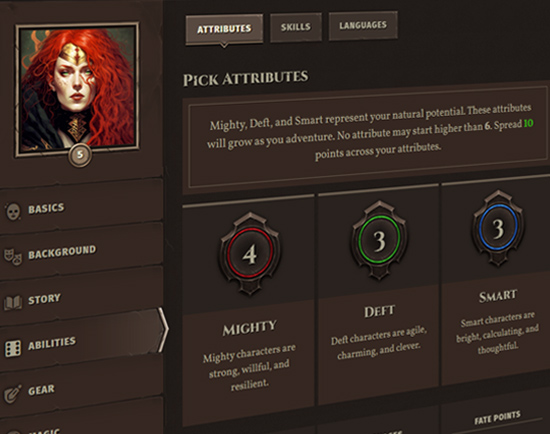You'll notice in OSR+ that none of the spells in the system do damage. This is intentional. Doing damage with magic is handled in the form of each spellcaster having a maleficence that lets the player shape what that looks like in any way they can imagine. As a concept, we owe maleficence to indie publisher Lost Pages and the grimoires Marvels & Malisons and Wonders & Wickedness.
Maleficence is the primary way spellcasters attack and parry in combat because they're more likely to have higher Smart scores (as all spellcasters except for the Bard rely on Smart for their MP). The system is designed to penalize character concepts that try to be just as good at physical combat as they are at spellcasting. This is a deliberate design decision to guard against players who want to create generic fighter-mages who are good at everything. In the opinion of this system's creator, when a concept becomes too broad, it's not a concept at all.
Secondary Effects
Maleficence is kind of like how some of the superheroes in X-Men have elemental powers and can do different things with them depending on the environmental context in which they use them. Ice Man, for example, manipulates the moisture in air and thus can conjure water and freeze it seemingly out of nothing, into any shape he can imagine. The same is true of the cold maleficence.
Reward Creative Uses of Secondary Effects
When you consider the secondary effects of a maleficence, you should afford players broad leeway in using their maleficence creatively. A Divine maleficence could be used to create a flash of light to see in a dark cave, dispel magical darkness, or even blind someone if used in close quarters. A Lightning maleficence could be used to charge a metal door with electrical shock or jumpstart a lodestone-powered battery. A Chaos maleficence could randomize a deck of cards and foil a fraudster's confidence trick.
You should reward especially creative uses of maleficence. For example, suppose you have a PC on death's door who was downed by some kind of disease or poison-related affliction, and a spellcaster with the Vampiric maleficence wants to try to stabilize them. If the player argues that their spellcaster is going to "suck the poison out with their Vampiric maleficence" to stabilize the PC, you can use the result of their maleficence attack in lieu of a stabilize check.
Using the maleficence attack roll in this way to establish a TN (or in a contested check) is a good way to simulate the effectiveness of the PC's magic while also presenting a challenge.
Grant Effects, Not Outcomes
When players use their maleficence to generate a secondary effect (e.g., they're using the Sound maleficence to blast a glass roof above the enemies or the Cold maleficence to freeze liquid in a hallway so they slip), be careful to grant an intended effect but not a mechanical outcome.
In the above examples, the intended effect of blasting the glass is that harm will befall the enemies, but whether the result is 1d6 slashing damage or the enemies forgoing their turn as they shake off the glass is up to the GM. That is, a player shouldn't say "I want to use my Cold maleficence to make the enemies prone" by freezing the water in the hallway—that's a mechanical outcome that might arise from your ruling and what the enemies end up doing—instead, they should declare what their PC is actually doing (freezing the water on the ground), and let the GM know that their intent is to make the hallway slippery.
We make this distinction because there are lots of spells and abilities that are designed specifically to yield certain mechanical outcomes. For example, the Shadow maleficence's peril is to blind victims, so we don't want the Divine maleficence (despite that it generates radiance) to be used reliably to cause blindness. It's certainly possible that a unique situation might lead to that radiance blinding enemies, but PCs can't reach for those mechanical outcomes as if they were part of the ability in the first place.
Zero Damage Effects
Some maleficences specify what happens if the maleficence would deal 0 damage. This special effect only occurs if the spellcaster is intending to do harm with their maleficence, but for whatever reason, ends up dealing 0 damage. (For example, the Chaos maleficence deals 0 damage when used to cause harm.)
 Armor
Armor Classes
Classes Conflicts
Conflicts Ethos
Ethos Flaws
Flaws Glossary
Glossary Kits
Kits Maleficence
Maleficence Origins
Origins Shields
Shields Skills
Skills Spells
Spells Stances
Stances Status Effects
Status Effects Tactics
Tactics Talents
Talents Techniques
Techniques Treasure
Treasure Weapons
Weapons











 Hall of Heroes
Hall of Heroes Hall of Legends
Hall of Legends Dungeons & Flagons
Dungeons & Flagons